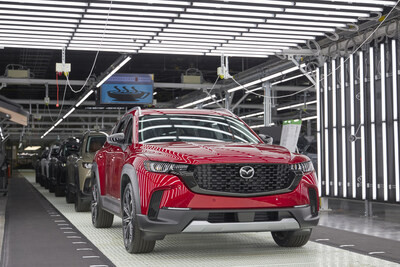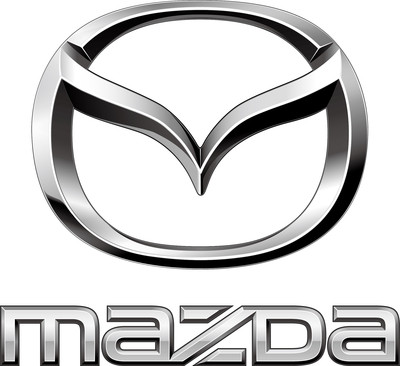Mazda, a globally recognized automotive brand, has captivated drivers with its blend of stylish design, engaging driving dynamics, and innovative technology. For those wondering, “Where Is Mazda Made?”, the answer is more nuanced than a single country of origin. While Mazda’s roots are firmly planted in Japan, its manufacturing operations have expanded strategically across the globe to serve diverse markets efficiently.
To address the question directly, a significant portion of Mazda vehicles are still manufactured in Japan. However, to meet international demand and optimize production, Mazda has established key manufacturing hubs in various regions. One notable location contributing to Mazda’s global production is in North America, specifically at the Mazda Toyota Manufacturing (MTM) plant in Huntsville, Alabama, USA.
 2023 Mazda CX-50 Assembled at Mazda Toyota Manufacturing Plant in Huntsville, Alabama
2023 Mazda CX-50 Assembled at Mazda Toyota Manufacturing Plant in Huntsville, Alabama
This state-of-the-art facility, a joint venture between Mazda and Toyota, represents a substantial $2.3 billion investment. The MTM plant is designed to produce up to 300,000 vehicles annually and generate employment for approximately 4,000 team members, with an additional 2,000 jobs supported by on-site supplier partners. A key model currently rolling off the assembly lines at MTM is the Mazda CX-50 crossover, production of which commenced in January of 2023.
The strategic importance of the MTM plant is further underscored by its role in supplying vehicles to key markets. The Mazda CX-50, assembled in Alabama, is not only destined for the US market but is also exported to Mexico, Canada, and Colombia. This export activity highlights the plant’s crucial function in Mazda’s North American and Latin American distribution network.
Mexico itself is a significant market and operational base for Mazda. Celebrating 18 years of operation in Mexico, Mazda de Mexico plays a vital role in the corporation’s global strategy. The introduction of the US-assembled Mazda CX-50 to the Mexican market is a direct response to customer demand, as noted by Miguel Barbeyto, president of Mazda de Mexico. He emphasized that the CX-50 caters to customers seeking a vehicle that balances urban sophistication with off-road capability, aligning with the active lifestyles of many Mexican consumers.
“We are eager for the arrival of Mazda CX-50 to Mexico. Customers had asked for it so, as always, we listened and integrated this exciting new product that gives a new face to Mazda, now much more robust but maintaining the sophistication of this seventh generation,” stated Miguel Barbeyto. This sentiment reflects Mazda’s commitment to responding to market needs and providing diverse options to its customer base while upholding high quality standards.
 Mazda North American Operations Headquarters in Irvine, California Overseeing Vehicle Sales and Marketing
Mazda North American Operations Headquarters in Irvine, California Overseeing Vehicle Sales and Marketing
Mazda’s North American operations are managed from its headquarters in Irvine, California. From this base, Mazda North American Operations (MNAO) oversees sales, marketing, parts, and customer service across the United States, Canada, Mexico, and Colombia through a network of approximately 795 dealers. This organizational structure demonstrates Mazda’s commitment to a strong regional presence and tailored strategies for each market within North America and beyond.
In conclusion, while the heart of Mazda’s manufacturing remains in Japan, the question “where is Mazda made?” reveals a global network of production facilities. The Mazda Toyota Manufacturing plant in Alabama stands as a testament to this international footprint, playing a critical role in producing vehicles like the CX-50 and supplying them to key markets across North and South America. This diversified manufacturing strategy allows Mazda to efficiently serve its global customer base while adapting to regional market demands.


